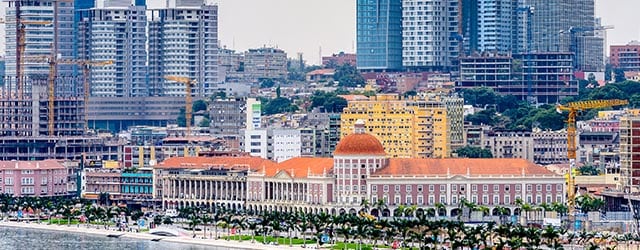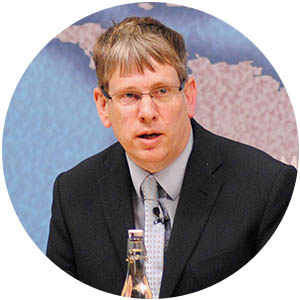Riding the commodities boom, Angola’s economy seemed invincible against recent global shocks. But the current slump in oil prices is forcing the country to rethink its dependence on oil.

For most of this century, Angola has been one of the world’s fastest-growing economies. In 2008, the economy was growing by a startling 14%, and it was around this time that the second-largest oil producer in sub-Saharan Africa attracted huge investments—particularly from resource-hungry China. These investments, in the main, went into further expanding oil production and rebuilding infrastructure after the long civil war, which ended in 2002.
Double-digit growth in the years prior to the Great Recession was fueled by the country’s abundant natural resources. Based on a basket of goods and services deemed necessary for expats (and local wealthy) rather than local poor, the capital, Luanda, became the most expensive city in the world for expats to live in.
After the civil war ended in 2002, accommodation became scarce and practically everything had to be imported. The economy continued to grow throughout the financial crisis of 2007–2008 and the oil price slump that ensued—albeit at a slower pace, and with a larger contribution from construction and other non-oil sectors.
However, the Angolan economy remains highly vulnerable to oil price shocks. The oil sector accounts for some 45% of total GDP, and any downturn is likely to have severe ripple effects on other parts of the economy. Oil also accounts for around 95% of all exports, and previous to the slide in oil prices generated more than three-quarters of government revenues. For example, in 2013, oil contributed $30.3 billion of total government revenues of $40.5 billion, according to figures published by the International Monetary Fund.
So the relentless decline in crude oil prices to less than a third of their 2014 peak has severely dented the economy and forced government to rein in its spending plans. “GDP forecasts have been consistently revised down, and the economy is now expected to grow by 3.1% this year and 4.3% in 2017,” observes Jean-Philippe Pourcelot, junior economist at Barcelona-based FocusEconomics.
Angola has responded more rapidly to plummeting oil prices than most energy exporters. The government benchmarked oil at a relatively conservative $45 a barrel when it approved its 2016 budget last December, and it “will probably be revising this down to $35 or below,” according to Antonio Coutinho, CEO of Standard Bank in Angola.
Alex Vines, director of London-based think tank Chatham House’s Africa Program, notes that “the Angolan government has learned from the 2008–2009 downturn in commodity prices. They have cut spending by $15 billion. But they didn’t anticipate a protracted slump in oil prices.”
SPENDING SHORTFALLS

Government subsidies on fuel, electricity and water were slashed at different periods in the past year, causing an immediate spike in prices, but making them more market-related and sustainable in the long term. Should oil prices remain at current levels, however, economic forecasts for 2016 will continue to be trimmed. “I’d be surprised if they achieve 1% growth this year,” says Coutinho, adding that declining government oil revenues will result in big deficits, which they will have difficulty financing.
Further cuts to government spending are expected, although efforts are being made to protect essential infrastructure and social programs. The immediate response to the shortfall in revenues has been to delay payments to suppliers and contractors. Although some government payments are in arrears—and these have risen in recent months—Vines points out the last time that happened, during the 2008–2009 economic downturn, everyone got paid eventually, although some creditors had to wait longer.
Inflation is on the rise. At the end of 2015, it attained the highest rate in more than four years. Interest rates went up five times during the year. The central bank, Banco Nacional de Angola (BNA), decided to raise rates again in its first meeting of 2016 to support the Angolan kwanza and protect dwindling foreign currency reserves, which have fallen by roughly a third since 2013 to $22 billion—equivalent to around seven months of imports, according to the IMF. The currency hit an all-time low against the US dollar in late January and remains under a lot of pressure, says Coutinho, pointing to the widening gap between official and black-market exchange rates.
He believes the BNA will have to devalue further, even though this will fuel inflation and therefore likely lead to another rise in interest rates. More immediately, there is a severe shortage of dollars since two of the main suppliers, Bank of America and Standard Chartered, withdrew from the market late last year.
Coutinho says certain correspondent banks have decided not to clear dollars from Angolan banks because of concerns over money laundering, even though the government and the governor of the central bank, José Pedro de Morais (see interview, next page) have made huge efforts to put anti-money-laundering laws in place.
Although the efforts of the government and central bank deserve recognition, Coutinho sees large international banks holding back because the risk of fines outweighs the potential rewards of doing business in Angola. “That is what lies behind the decision of suppliers of dollar notes to withdraw from the market,” he says. With priority in the allocation of dollars going to the strategic oil sector and to meeting food and healthcare needs, some private companies are struggling to pay overseas suppliers.
“Another headwind,” says Vines, “is the speculative property bubble in Luanda, [which] is bursting.” Rental prices in Luanda have plummeted, and there is now a glut of office and residential space. Coutinho believes that, for those with long-term horizons, this moment could be an investment opportunity.
DIFFICULT DECISIONS AHEAD
For the time being, a downturn in real estate is reducing construction activity and adding to the pressures on Angolan banks. As Vines points out: “A lot of banks have nonperforming loans from real estate developments.” The BNA now has to combine its cleanout of the banks with providing sufficient liquidity to forestall widespread failures.
The government is diversifying its sources of funding by tapping global capital markets. Vines notes that the successful launch of a $1.5 billion eurobond late last year, which was heavily oversubscribed, is an expression of market confidence in Angola’s prospects over the long term. The continuance of Chinese investment—so critical to major infrastructure and development programs—was recently demonstrated by Sinochem’s signing a long-term supply contract with Sonangol, the dominant state-owned oil company.
“[The oil slump] is forcing Angolans into focusing on how to diversify their economy,” says Vines, “and this time, there is more serious discussion on how to go about it.” Angola is better placed to push through rapid changes than many other oil-dependent African economies, largely because the political elite is more cohesive and can take a longer-term view. President José Eduardo dos Santos has been in power for 36 years.
One of the key challenges is how to gain competitiveness when the cost base has previously been so high. Coutinho sees agriculture as the most promising sector. “Angola has wonderful arable land, and developing value-added products based on that would cut imports and therefore have a positive impact on the balance of payments,” he says. It would also generate more employment in a country with a young and fast-growing
population. He also sees investment opportunities in power generation, transportation and distribution, given a relatively wealthy country that still lacks a stable electricity supply.
Times may be tough for Angola. The potential upside, says Coutinho, is that the rough patch will force the government to make equally tough decisions that will help build a more diversified and resilient economy.
GFmag.com Data Summary: Angola
Central Bank: National Bank of Angola | |||
|---|---|---|---|
|
International Reserves |
$28.1 billion | ||
|
Gross Domestic Product (GDP) |
$102 billion | ||
|
Real GDP Growth |
2013 |
2014 |
2015* |
|
GDP Per Capita—Current Prices |
$ 4,061* | ||
|
GDP—Composition By Sector* |
agriculture: |
industry: |
services: |
|
Inflation |
2013 |
2014* |
2015* |
|
Public Debt (general government |
2013 |
2014* |
2015* |
|
Government Bond Ratings |
Standard & Poor’s |
Moody’s |
Moody’s Outlook |
|
FDI Inflows |
2012 |
2013 |
2014 |
* Estimates
Source: GFMag.com Country Economic Reports



